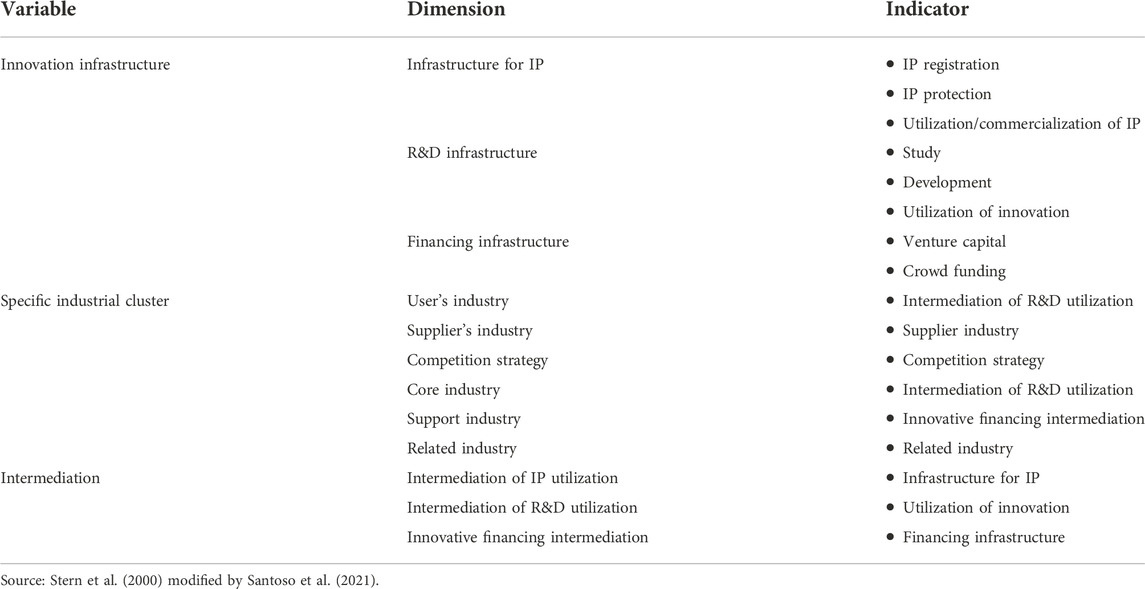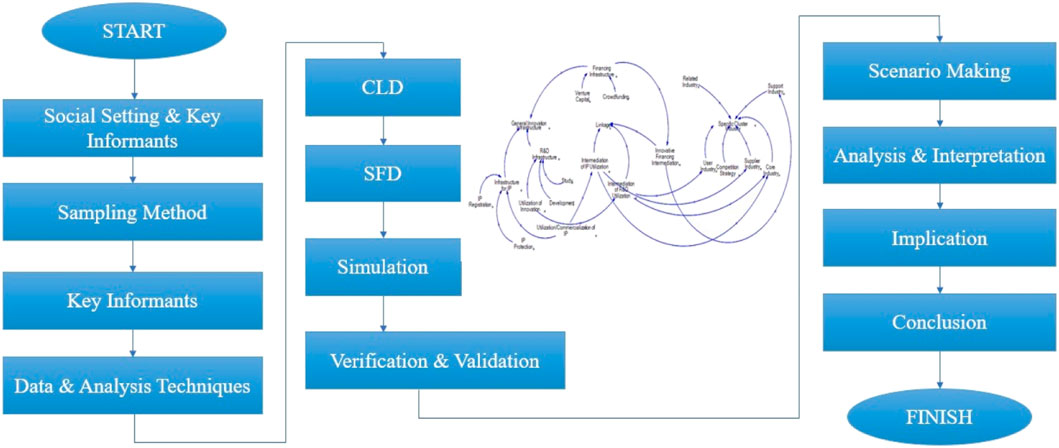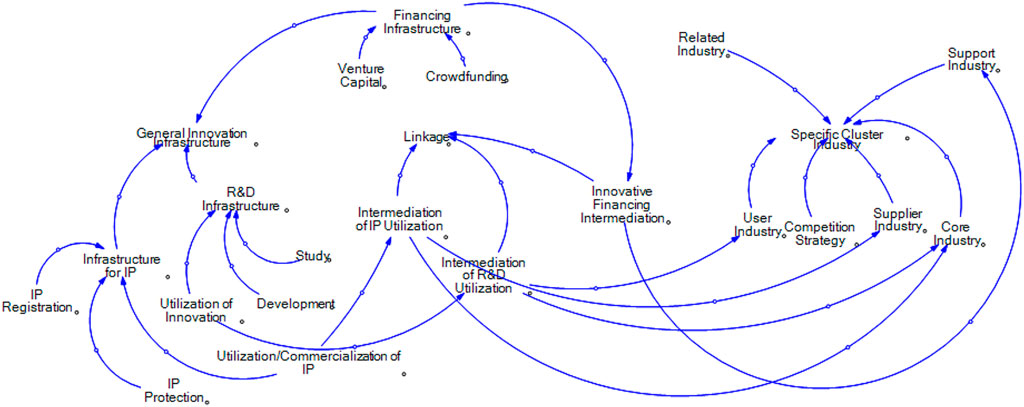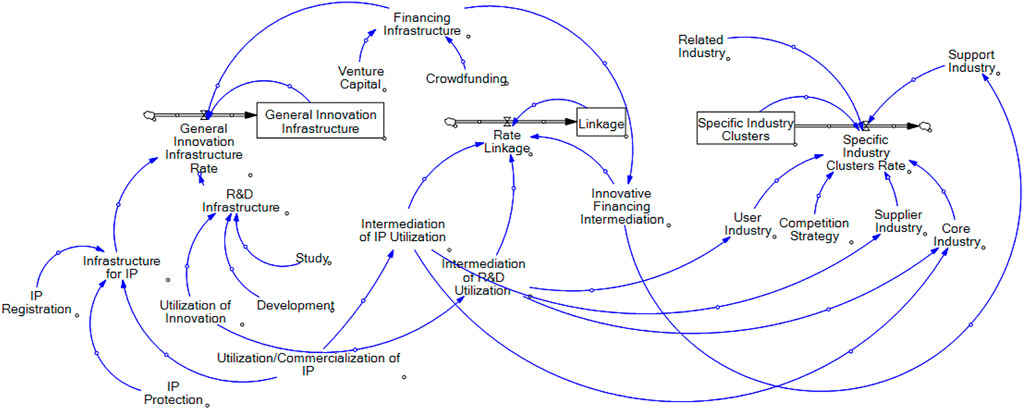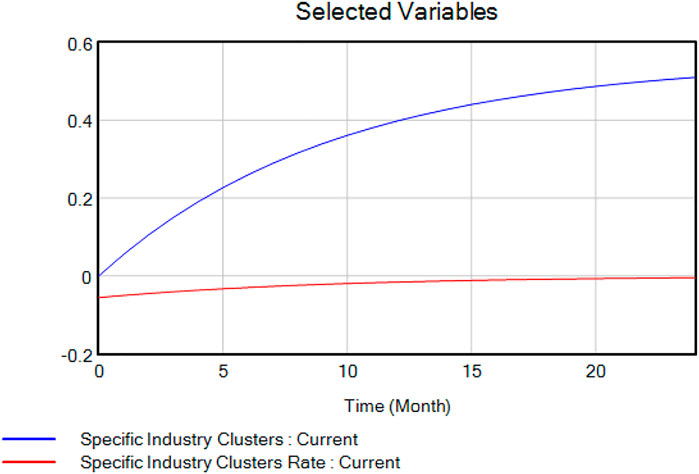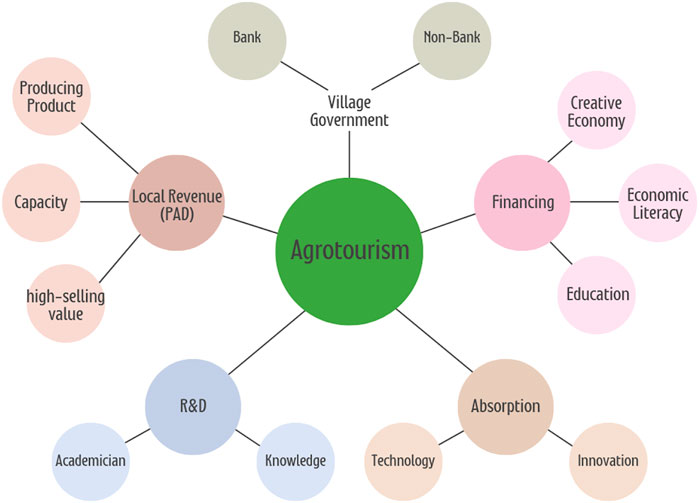- 1Department of Management, Faculty of Economics and Business, Mercu Buana University, Jakarta, Indonesia
- 2Research Center for Cooperative, Corporation and People’s Economy, National Research and Innovation Agency, Jakarta, Indonesia
- 3Communication Bureau, Coordinating Ministry for Maritime and Investments Affairs, Jakarta, Indonesia
- 4Accounting Department, Sekolah Tinggi Ilmu Ekonomi Swadaya, Jakarta, Indonesia
- 5Economic Research Department, Pratama Kreston Tax Research Institute, Jakarta, Indonesia
- 6Management Department, BINUS Online Learning, Bina Nusantara University, Jakarta, Indonesia
- 7Department of Health Administration, College of Business Administration, King Saud University, Riyadh, Saudi Arabia
- 8Business and Technology University, Tbilisi, Georgia
- 9Hult International Business School, Cambridge, MA, United States
Cibodas village is one of the villages in the regency of West Bandung, which shows potential for agrotourism and a creative economy. However, the dynamic environmental changes in the post-COVID-19 era have presented challenges to developing these economic potentials. Therefore, creating a model to develop agrotourism and a creative economy in Cibodas village is necessary. This study aims to create a system dynamics model with a causal loop diagram (CLD) based on the village innovation system framework to develop the agrotourism-creative economy in Cibodas village. Both qualitative and quantitative approaches are used to identify the main variables and to develop and review the CLD. The quantitative approach provides researchers with three main variables that must be involved in the study, namely, the general innovation infrastructure, specific industrial clusters, and intermediation. The three variables are interrelated and form a CLD. The formed CLD was further explored with a qualitative approach in the form of an in-depth interview and focus group discussions (FGDs) with several key informants: the Head of the Agronative Cooperative, the Head of Cibodas Village, and the Regency Tourism and Culture Office (Disparbud) of West Bandung. Based on the results of the scenario for the existing conditions for a 24-month period, it was found that the innovation infrastructure variables had increased by 10.94% and the intermediation variables had increased by 0.22%. The simulations were carried out by increasing the intermediation intervention twice as much as that of the existing conditions. Hence, the innovation infrastructure variables increased by 18.01% and the intermediation variables increased by 0.05%. Cibodas village would take advantage of these R & D products to help its creative economy actors produce more products having a high-selling value. Moreover, by employing this strategy, they could also help their creative economy actors increase the absorption of an innovation to have such a high competitiveness.
1 Introduction
Agrotourism brings tourists to a farm or ranch to teach them about the local culture and increase income, while ecotourism promotes sustainable and responsible travel to areas with the intention of conserving and protecting the environment (Koliopoulos et al., 2020). Both of these forms of tourism also work toward supporting the local community and encouraging a respectful mindset. Agrotourism is the fastest growing industry among other tourism development models around the world (Nimase, 2020). It is being taken very seriously. Agrotourism was developed in developing countries as a potential development model to preserve natural resources and support the process of economic improvement of local communities. It can provide an alternative measure of economic improvement to support management activities and generate income for local communities (Rasulovich, 2021). Agrotourism has been successfully developed in Switzerland, New Zealand, Australia, and Austria. Meanwhile, in the USA, it is only in the early stages, which has developed only in California. Several farming families think that they can increase their income by offering overnight accommodation, benefiting from tourist visits (Salim et al., 2022). The development of agrotourism is a combination of agriculture and world tourism for holidays in a village or rural area. The attraction of agrotourism is such as the experience of farming and enjoying garden products along with the services provided. Agrotourism is part of a tourist attraction that utilizes agricultural businesses (agro) as a tourist attraction. The aim is to broaden knowledge, recreational experience, and business relationships in agriculture. Through the development of agrotourism that emphasizes local culture in utilizing land, we can increase farmers’ income while preserving land resources, as well as maintaining local culture and technology (indigenous knowledge) which are generally following the conditions of their natural environment (Evgrafova et al., 2020).
Tourism objects, which are non-oil and gas foreign exchange earners, are now being developed in various regions. The tourism objects that have developed the longest are those that highlight the beauty of nature, art, and culture. This tourism object has been recognized by the government as the largest foreign exchange earner from the non-oil and gas sectors (Anggraeni & Priatini, 2019). Considering that natural beauty is a strong attraction for tourists, this potential is interesting to work on. Indonesia, as an agricultural country, has a very wide agricultural land. The series of agricultural activities from cultivation to post-harvest can be used as a special attraction for tourism activities. By combining agronomic activities with tourism, many large plantations in Indonesia have been developed into agrotourism objects (Musa & Chin, 2022). The role of agrotourism in the economy of a region and the surrounding community is to improve the quality of life of the community and preserve resources or the environment. Plantation areas, certain vegetable-producing centers, and rural areas have a great potential to become agrotourism objects. The contained potential must be viewed in terms of the natural environment, geographical location, type of the product or agricultural commodity produced, and facilities and infrastructure (Bizikova et al., 2020).
Cibodas village is one of the villages in West Bandung Regency (see Figure 1). The village has become one of the centers for superior commodity horticultural vegetables such as broccoli, tomatoes, chilies, red peppers, green peppers, lemons, and mustard greens, which have experienced significant development. Santoso (2019), in Pujon village, which is located in the highlands, developed a horticultural center which also serves as a place for agrotourism. This natural wealth stimulates not only the development of the agricultural sector in Cibodas village but also the tourism sector, especially agrotourism. Many tourists are attracted to this village to enjoy the tourism objects that highlight nature’s beauty and various agricultural production types. The national government has recognized these tourism objects as the most significant foreign exchange contributor from the non-oil and gas sectors in Cibodas village (Karampela et al., 2021). With the high potential of agrotourism, the agricultural sector in Cibodas village is expected to be sustainable and avoid marginalization (Paul & Patil, 2022). Moreover, the agricultural sector in Cibodas village can absorb almost 20–30% of the workforce, thereby increasing the welfare of the farmers (Fatmawati and Santoso, 2022). Interestingly, these benefits are not only felt by farmers but also by other residents of Cibodas village who are not farmers (Santoso, 2019). This spillover effect arose because of the village cooperatives that developed the agrotourism value chain in Cibodas village, such as BUMDES or a village-owned company named Karya Mandiri and Agronative Pratama Producer Cooperative (KPAPI).
However, the dynamic environmental changes in the post-COVID-19 era present a challenge for developing the Cibodas village’s economic potential. Village cooperatives that are expected to be able to become the front line in the village economy because they are the economic institutions closest to the potential for localization (local wisdom) went bankrupt due to the pandemic. During this pandemic, it was recorded that of the 51,000 village cooperatives that stood, only 10,000 or 2% of the total village cooperatives were still able to survive; the rest collapsed because their businesses were hindered by the impact of COVID-19 (Pratiwi & Novianty, 2020). The main factor in the demise of the village cooperatives was when the establishment of the village cooperative did not carry out a business feasibility analysis based on the village’s potential (localization), so it failed to transform its supply chain when facing dynamic environmental changes.
By adapting Nelson’s (1993) national innovative systems theory and Romer’s (1990) study on endogenous technological change, we can obtain the development of the agrotourism-creative economy in the innovation system framework from various elements of the general innovation infrastructure, environmental elements of industrial clusters, and elements of the linkage between the general innovation infrastructure and the creative economy industrial cluster. The existing condition in the agrotourism-creative economy ecosystem in Cibodas village creates an interaction among the elements and the variables which, in turn, generate many added values, especially from the pull of demand such as industrial clusters triggered by businesses that KPAPI and BUMDES Cibodas run, thus requiring system modeling, especially system dynamics. Therefore, we are interested in studying and analyzing them. A company can maintain a competitive advantage by leveraging its ability to innovate (Pérez-Luño et al., 2007; Bowonder et al., 2010). In principle, the system dynamics approach is a series of stages aimed at modeling the behavior of system variables interacting dynamically within the framework of goal achievements (Thelen and Smith, 1996). Therefore, this study aims to create a system dynamics model with a causal circle diagram based on the village innovation system framework to develop the agrotourism-creative economy in Cibodas village. To the best of our knowledge, this is the first work aiming at developing a model to advance the village economy by referring to the village innovation system framework.
The rest of this study is organized as follows. Section 2 is devoted to discussing the methodology used in this study. Section 3 discusses the results of this study. Finally, section 4 concludes the study.
2 Methods
Following Dhirasasna and Sahin (2019), this study combines the quantitative and qualitative approaches sequentially. It means that, in the first stage, the quantitative data were analyzed. Then, the qualitative data were also analyzed as a means of confirmation (Creswell and Clark, 2017). To develop the CLD, we need to derive the variables used in the national innovation capacity analysis and adjust them to factors that exist at the regional level (Widodo et al., 2004). The quantitative approach is used to identify those variables that should be involved. Those variables are the general innovation infrastructure, specific industrial clusters, and intermediation which are adapted from Nelson’s (1993) national innovative systems theory and Romer’s (1990) study on endogenous technological change.
Autio (1998) stated that regional innovation infrastructures were constituted by a subsystem of knowledge generation and diffusion dimension. Furthermore, Hall and Willams (2008) stated that strategies to develop regional innovation were taken by providing both soft (skills, knowledge, and trust) and hard (finance) infrastructures. Accordingly, in this study, the innovation infrastructure variable was broken down into three dimensions, namely, the infrastructure for intellectual property (IP), research and development (R&D) infrastructure, and financing infrastructure. By adapting Porter’s (1990) diamond model used to describe the micro-economic background of each industrial cluster, we divided the specific industrial cluster variables into six dimensions, namely, user’s industry, supplier’s industry, competition strategy, core industry, support industry, and related industry. Warnke et al. (2016) stated that intermediaries had been taken into consideration in an innovation system concept based on their direct knowledge and technology. Howells (2006) stated that knowledge processing and intellectual property were elements of the innovation intermediation function. Therefore, we had intermediation of IP utilization, R&D, and innovative financing as the dimensions of the intermediation variables. Table 1 shows the operationalization of these three variables.
We need to select several key informants to conduct qualitative approaches. The informants were selected based on the criterion consideration for making innovations and breakthroughs in business processes and added value. It is a fundamental principle in the use of the purposive sampling method (Staller, 2021). A pilot study was conducted to determine the extent to which the involvement and capability of the informants understood the research focus. The test instrument used is triangulation of data sources by using various data sources such as documents, archives, interviews, observations, or also interviewing more than one subject who is considered to have different points of view, as a cross-check of the data that have been collected. According to the test, we select the following key informants: the West Bandung Regency Tourism and Culture Office (Disparbud), Head of Cibodas village, and Head of the Cibodas village-owned company BUMDES. We involve them in the several qualitative methods, such as deep interview, documentation, and forum group discussion (FGD). These methods are employed to obtain their review and confirmation related to the proposed CLD.
The first step to conduct an analysis on system dynamics is to create a CLD (Blair et al., 2021). The CLD is created by linking all the variables, thus forming a loop related to one another (Riyanto and Santoso, 2022).
According to Khotimah (2015) stages in the systems approach dynamics are as follows:
1) Identification and definition of the problem.
2) System conceptualization.
3) Model formulation.
4) Model simulation.
5) Model verification and validation.
6) Policy analysis.
7) Policy implementation.
The stages in the system dynamics approach begin and end with an understanding of the system and its problems to form a closed circle. The first step to conduct an analysis on system dynamics is to create a CLD (Blair et al., 2021). The CLD is created by linking all the variables, thus forming a loop related to one (Riyanto and Santoso, 2022). According to Jhon D. Sterman in Dini (2018), the CLD is a form of mapping that shows the causal relationship between variables and arrows from cause to effect. The causal loop diagram is a great tool for
1) Quickly capturing a hypothesis about the causes of dynamics.
2) Generating and capturing models individually or in groups.
3) Communication of important feedback that is believed to be responsible for a problem.
The next step to analyze the system dynamics was creating a stock flow diagram (SFD) (Schoenenberger et al., 2021). According to Jhon D. Sterman in Dini (2018), the SFD is a central concept in system dynamics theory which describes the physical structure, where stock is an accumulation that can increase and decrease, while flow is a process that causes the stock to increase or decrease.
Figure 2 shows the research flow employing a system dynamics method. Prior to the simulation, it was necessary to carry out validation and verification to ensure that the employed model was valid, so the results of the simulation that are to be generated from this study represented the situations in the field. However, before carrying out a validation, we had to determine the scenario that would be used in the simulation. This scenario could be selected based on the situations posing a problem in the field.
The population in qualitative research is the social situation. A social situation is a set location or place for conducting the research. The social situation directly directs a researcher to really focus on the situation in the location under study, namely, Cibodas village, does not penetrate outside the location, widens, and extends everywhere outside the established social situation.
3 Result and discussion
The identification of this system was the agrotourism-creative economy development system within the innovation system framework, the location of which was Cibodas village. This study employed the concept of an innovation system framework in its development system. We could observe it from the general innovation infrastructure, specific industrial clusters, and intermediation, and the results of Cibodas village development with the concept of the regional innovation capacity are expected to be the input and consideration for related parties and policymakers both in the government in developing agrotourism-creative economy village innovations that are expected to contribute to actors and the community in developing villages to improve community welfare. F1: general innovation infrastructure: the infrastructure for IP, R&D infrastructure, and financing infrastructure. F2: specific industrial clusters: user’s industry, supplier’s industry, competition strategy, core industry, support industry, and related industry. F3: intermediation: intermediation of IP utilization, intermediation of R&D utilization, and innovative financing intermediation.
There were two scenarios planned to develop various businesses in the agricultural sector in Cibodas village (see Figure 3). The first scenario is the existing condition without intervention for each variable (F1, F2, and F3) until the next 24 months; the description or condition of each indicator will be known. Verification and validation are carried out so that the resulting model is considered valid. The second scenario is the intervention of the intermediation variable. For example, in the intermediation (linkage) variable: the value in each dimension is increased from 20% to 25% and is formulated on the flow rate linkage. The results will be shown in the output in Figure 10.
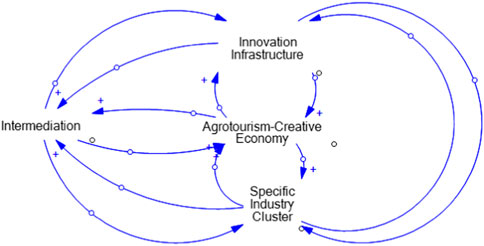
FIGURE 2. Modeling for Developing an Agrotourism-Creative Economy in the Framework of a Village Innovation System.
Based on the operationalization table of variables, modeling the construction of relationships between variables, namely, intermediation, innovation infrastructure, and specific industrial clusters on system dynamics, can be seen in Figure 2. Figure 3 shows the result of software processing from the interaction between variables according to the variable operationalization table to create CLD modeling for developing an agrotourism-creative economy in the framework of a village innovation system.
Figure 4 shows the result of software processing from the interaction between variables according to the variable operationalization table to make SFD modeling for developing an agrotourism-creative-economy in the framework of a village innovation system.
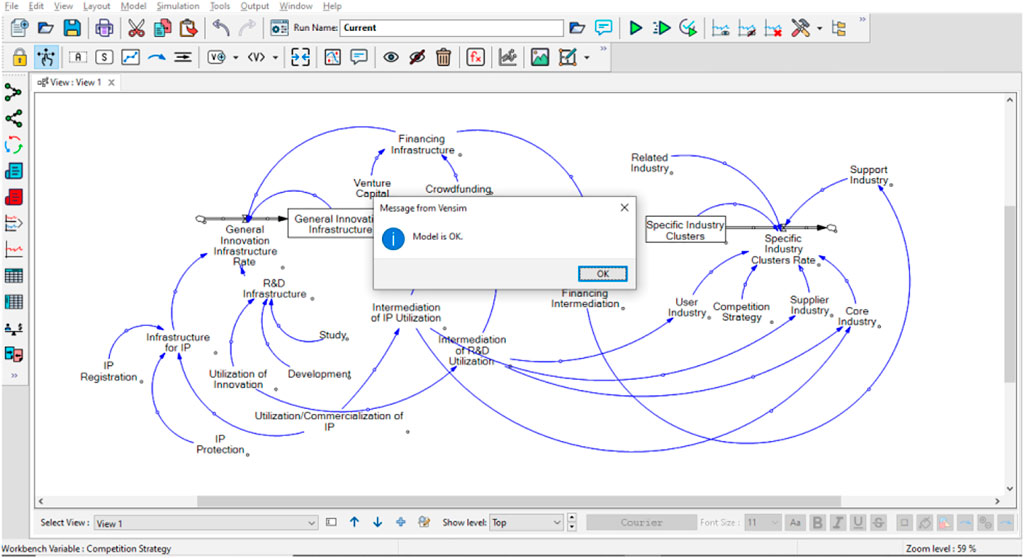
FIGURE 5. The model was running well without errors in the formulation source: Data Processing, 2022.
Before starting the simulation, it is necessary to perform validation of models to ensure the interrelationship variable, and if the validation results show OK, it can be interpreted that the whole series has been interconnected and provides the causal effect. Figure 5 shows the initial stage where it is necessary to make a relationship between dimensions and variables and influence each other and have an attachment, and when validation is carried out, all variables are connected to each other; then, the Vensim PLE application will show OK; if it is not connected, then the system will not successfully validate, so the process needs to be repeated.
The finding that the variables were identified and interacted with one another had been based on the literature reviews from various previous studies. Moreover, in this study, we interviewed and brainstormed ideas with several policymakers such as Disparbud KBB, Head of Cibodas village, Head of the Cibodas village-owned company (BUMDES), and KBB creative economy actors acting as the evaluators to evaluate the model. The formulation of the model of the agricultural sector business system in Cibodas village had been accepted by the evaluator, so this model was valid in a constructional manner.
A structural validity test aims to test the stability of the structure or behavioral values between the model and the real system. This test can be carried out by looking at two interrelated variables, namely, comparing the actual logic and the simulation results. In this study, the variables to be tested are the innovation infrastructure, specific industrial cluster, and intermediation.
Therefore, based on the structural validation test in Figures 6–8, it can be concluded that the models and formulations used in the system dynamics modeling are valid. This is reflected in the existing conditions and scenarios that are directly proportional.
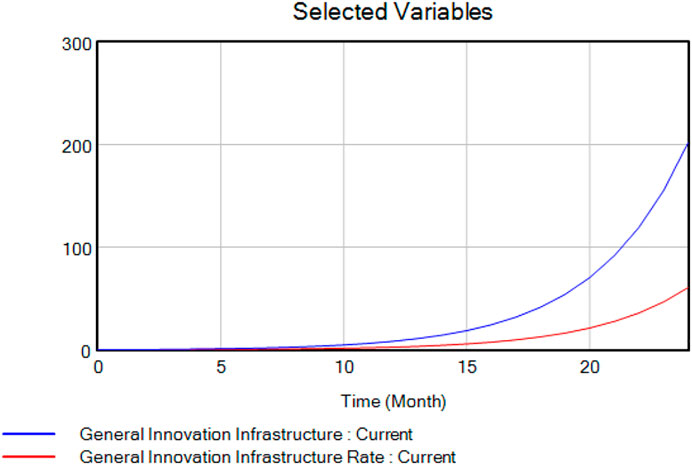
FIGURE 6. Causal strip diagram variable general innovation infrastructure source: Data processing results, 2022
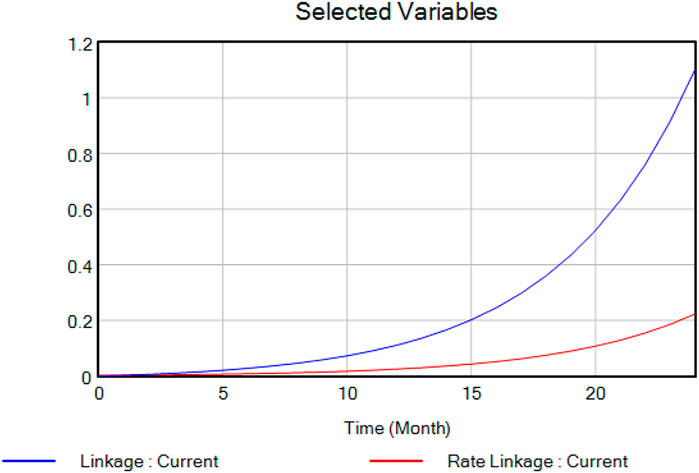
FIGURE 8. Causal strip diagram variable linkage (intermediation) source: Data processing results, 2022.
3.1 General innovation infrastructure model validation
Based on the validation carried out on the two variables mentioned previously, Table 2 shows the results of the validation test for the performance of the agricultural sector business model in Cibodas village. It means that a 1% increase in the infrastructure will lead to a 5%–44% annual growth. Therefore, in this model, we assumed that the actual condition was 5% multiplied by 2 due to a 2-year period; it was 10.80.
Mean comparison:
Based on the aforementioned results, it was found that E1 was lower than 5%. Therefore, the model was deemed to be valid.
Error variance
Based on the results of the validation test of the quantitative test carried out on the agricultural sector business model in Cibodas village, it was found that the validation of the quantitative test confirmed that the model was valid.
4 Linkage model validation (intermediation)
The validity test was conducted on the model in Figures 2, 9 by looking at the actual conditions in the field and by assuming that the actual condition was 0.022. Therefore, in this model, we assumed that the actual condition was 0.27% multiplied by 2 due to a 2-year period; it was 0.054.
Mean comparison:
Based on the results of E1 mentioned previously, it was found that E1 was lower than 5%. Therefore, the model was deemed to be valid.
Error variance
Based on the results of E2 mentioned previously, it was found that E2 was lower than 30%. Therefore, the model was deemed to be valid. Based on the results of the validation test of the quantitative test carried out on the agricultural sector business model in Cibodas village, it was found that the validation of the quantitative test confirmed that the model was valid.
Based on the validation carried out on the two variables mentioned previously, Table 2 shows the results of the validation test for the performance of the agricultural sector business model in Cibodas village.
There were three variables observed in this study, namely, the general innovation infrastructure (F1), specific industrial cluster (F2), and intermediation (linkage) (F3), so that stakeholders, for example, 1. Policymakers prepare the general innovation infrastructure and 2. Business players in the specific industrial cluster (user’s industry, supplier’s industry, competition strategy, core industry, support industry, and related industry) prepare themselves to welcome the scenario in the next 24 months.
Based on the results shown in Figure 9, it was found that in the existing condition for the next 24 months,
1) The general innovation infrastructure variable would increase by 10.94%, with a linear curve. This 10.94% increase might occur in the research, development, venture capital, crowd funding, and IP utilization/commercialization. This IP utilization/commercialization contributed to the increased intermediation of IP utilization. Moreover, the financing infrastructure would directly impact on the innovative financing intermediation.
2) Linkage variable (intermediation) would increase by 0.22% with a linear polynomial curve trend. This linkage (intermediation) was a government regulation/program applied to connect the supply side pulls (general infrastructure innovation) to the demand side (creative industrial clusters). In linkage (intermediation), the intermediation of the R&D utilization would impact on the user’s industries and core industries in a specific industrial cluster. Moreover, the innovative financing intermediation would also impact on the supporting industries in the specific industrial clusters, and the intermediation of the IP utilization would directly impact on the supplier industry.
3) Based on the results mentioned previously, it was found that the lowest increase was in the linkage (intermediation) element. Therefore, the second scenario employed in this study was increasing/intervening the elements of linkage (intermediation) such as venture capital financing, study, and development.

FIGURE 10. Intermediation variable intervention scenario simulation results source: Data Processing Results, 2022
By employing the second scenario on the increasing linkage (intermediation) side, we made some changes in the formulation of the strategy inputted in the Vensim application. The results are as follows:
Therefore, based on the results shown in Figure 10, it was found that, in the case of the existing condition in the next 24-month period, increasing the intermediation variable produces the following results:
1) The general innovation infrastructure variable would increase by 22.79% with a polynomial curve. With the intervention of the intermediation variable (intermediation of IP utilization, intermediation of R&D utilization, and innovative financing intermediation), would increase the general innovation infrastructure variable (infrastructure for IP, R&D infrastructure, and financing infrastructure) by 22.79%.
2) The intermediation variable would increase by 0.74% with a polynomial curve trend. With the intervention of the intermediation variable (intermediation of IP utilization, intermediation of R&D utilization, and innovative financing intermediation), would increase the Intermediation Variable itself by 0.74% to connect the general infrastructure innovation variable to the specific industrial cluster variable.

FIGURE 11. Simulation result comparison of existing conditions and linkage intervention scenario (intermediation) source: Data processing results, 2022.
Figure 11 shows the results of the model simulation in the existing condition and intervention scenario intermediation variable.
Based on the simulation employing a system dynamics method, it was found that, in the case of the existing condition in the next 24-month period, the intermediation variable will result:
1) The general innovation infrastructure variable would improve from 10.94% to 22.79% (an 11.85% increase) with a polynomial curve. It would mean that with the intervention of the intermediation variable (intermediation of IP utilization, intermediation of R&D utilization, and innovative financing intermediation), would increase the general innovation infrastructure variable (infrastructure for IP, R&D infrastructure, and financing infrastructure) by 11.85% compared to the variable without any intervention.
2) The intermediation would improve from 0.003% to 0.74% (a 0.74% increase), with a linear curve trend. Stakeholders are expected to improve the three dimensions of the intermediation variable (intermediation of IP utilization, intermediation of R&D utilization, and innovative financing intermediation). The government can work with stakeholders to improve intermediation, in this study, especially agronative cooperatives, BUMDES Cibodas, and other relevant stakeholders
In Figure 12, the managerial implication would be that there were several recommendations on the intellectual property financing mechanism to improve the creative economy actors’ literacy and education in particular and the municipal and village governments’ literacy and education in general to increase the intellectual property rights in Cibodas village, having previously been quite low. This increased intellectual property would indirectly be able to increase the local revenue (PAD) of Cibodas village. Moreover, the government could also help the village government of Cibodas increase the intellectual property in Cibodas village by improving various financing services provided by both banks and non-banks, so they would be able to help the creative economy actors conveniently obtain the capital. By recommending various strategies on how to increase the R&D capabilities of producing a product, we hoped that we would be able to help the creative economy actors in Cibodas village to take advantage of these R&D products to increase their capacity of producing a product having a high-selling value. Moreover, this strategy would also be able to increase the creative economy actors’ absorption of innovation, so they would have high competitiveness. To increase their competitiveness, they also had to be supported with the absorption of a new technology. Therefore, it was necessary for the contribution of academics to be able to provide knowledge about these new technologies. This strategy could also increase the creative economy actors’ absorption of innovation, so they would have high competitiveness. To increase this competitiveness, they also had to be supported by the absorption of new technology. Therefore, as part of the academicians’ contribution, it was necessary for them to provide knowledge on these new technologies. This strategy could also increase the creative economy actors’ absorption of innovation, so they would have high competitiveness. To increase their competitiveness, they also had to be supported by the absorption of a new technology. Therefore, as part of the academicians’ contribution, it is necessary for them to provide the actors knowledge on these new technologies.
5 Conclusion
Therefore, this study aims to create a system dynamics model with a CLD based on the village innovation system framework to develop the agrotourism-creative economy in Cibodas village. To the best of our knowledge, this is the first work aiming at developing a model to advance the village economy by referring to the village innovation system framework.
1) This study resulted in two models, namely, CLD and SFD, as follows:
a) The resulting model is the CLD, as shown in Figure 4, which is the result of software processing from the interaction between variables according to the variable operationalization table to create CLD modeling for developing an agrotourism-creative economy in the framework of a village innovation system
b) The model generated by SFD is as shown in Figure 5, which is the result of software processing from the interaction between variables according to the variable operationalization table to make SFD modeling for developing an agrotourism-creative economy in the framework of a village innovation system
2) The modeling results have implications for the growth of the innovation ecosystem which are described as follows:
That the system dynamics can be expected to grow adaptive capabilities, absorptive capabilities, innovative capabilities, and collaborative capabilities of actors to respond to opportunities and needs, as well as resource allocation, as shown from the results of simulation employing a system dynamics method, it was found out that, in the case of the existing condition in the next 24-month period and the intermediation variable, the general innovation infrastructure variable would improve from 10.94% to 22.79% and the intermediation would improve from 0.003% to 0.74%.
Data availability statement
The raw data supporting the conclusion of this article will be made available by the authors, without undue reservation.
Author contributions
All authors listed have made a substantial, direct, and intellectual contribution to the work and approved it for publication.
Acknowledgments
The authors would like to extend their appreciation to King Saud University for funding this work through the Researcher Supporting Project (RSP 2022R481), King Saud University, Riyadh, Saudi Arabia.
Conflict of interest
The authors declare that the research was conducted in the absence of any commercial or financial relationships that could be construed as a potential conflict of interest.
Publisher’s note
All claims expressed in this article are solely those of the authors and do not necessarily represent those of their affiliated organizations, or those of the publisher, the editors, and the reviewers. Any product that may be evaluated in this article, or claim that may be made by its manufacturer, is not guaranteed or endorsed by the publisher.
References
Anggraeni, L., and Priatini, W. (2019). “Restructuring curriculum of tourism based on culture: Efforts to the preservation of cultural heritage humanity,” in 3rd international seminar on tourism (ISOT 2018) (Bandung, Indonesia: Atlantis Press), 179–182.
Autio, E. (1998). Evaluation of RTD in regional systems of innovation. Eur. Plan. Stud. 6, 131–140. doi:10.1080/09654319808720451
Bizikova, L., Nkonya, E., Minah, M., Hanisch, M., Turaga, R. M. R., Speranza, C. I., et al. (2020). A scoping review of the contributions of farmers’ organizations to smallholder agriculture. Nat. Food 1 (10), 620–630. doi:10.1038/s43016-020-00164-x
Blair, C., Gralla, E., Wetmore, F., Goentzel, J., and Peters, M. (2021). A systems framework for international development: The data-layered causal loop diagram. Prod. Oper. Manag. 30 (12), 4374–4395. doi:10.1111/poms.13492
Bowonder, B., Dambal, A., Kumar, S., and Shirodkar, A. (2010). Innovation strategies for creating competitive advantage. Research-Technology Manag. 53 (3), 19–32. doi:10.1080/08956308.2010.11657628
Cavana, R. Y., and Maani, K. E. (2000). A methodological framework for systems thinking and modelling (ST&M) interventions. 1st international conference on systems thinking in management.
Creswell, J. W., and Clark, V. L. P. (2017). “Designing and conducting mixed methods research(3rd ed),” in Multi-methodology approach to creating a causal loop diagram systems. Editor O. A. Sahin (Thousand Oaks, CADhirasasna, N: Sage Publications), 7, 42.
Dhirasasna, , , and Sahin, (2018). “A multi-methodology approach to creating a causal loop diagram. Systems 7 (3), 42. doi:10.3390/systems7030042
Dini, N. S. (2018). “Pengembangan model dan skenario untuk meningkatkan efisiensi distribusi pedagang besar farmasi dengan menggunakan pendekatan sistem dinamik,” (Indonesia: Institut Teknologi Sepuluh Nopember). Doctoral dissertation.
Evgrafova, L. V., Ismailova, A. Z., and Kalinichev, V. L. (2020). Agrotourism as a factor of sustainable rural development IOP conference series: Earth and environmental science. IOP Conf. Ser. Earth Environ. Sci. 421 (2), 022058. doi:10.1088/1755-1315/421/2/022058
Fatmawati, A. A., and Santoso, S. (2022). Development of creative tourism village in West Bandung regency with regional innovation capacity concept. Budapest Int. Res. Critics Inst. (BIRCI-Journal) Humanit. Soc. Sci. 5 (1), 4983–4997.
Howells, J. (2006). Intermediation and the role of intermediaries in innovation. Res. Policy 35 (5), 715–728. doi:10.1016/j.respol.2006.03.005
Karampela, S., Andreopoulos, A., and Koutsouris, A. (2021). “Agro”, “agri”, or “rural”: The different viewpoints of tourism research combined with sustainability and sustainable development. Sustainability 13 (17), 9550. MDPI AG. Retrieved from. doi:10.3390/su13179550
Khotimah, B. K. (2015). Teori simulasi dan pemodelan: Konsep, aplikasi dan terapan. Ponorogo, Indonesia: CV. Wade Group.
Koliopoulos, T. K., Kouloumbis, P., Ciarkowska, K., Antonkiewicz, J., and Gambus, F. (2020). “A roadmap for integrated green health ecotourism infrastructures, safe cultural heritage experience and agritourism destinations in the post Covid-19 pandemic era,” in Proceeding of the International conference on tourism, technology and systems, Singapore, October 29–31, 2020 (Springer), 108–119.
Musa, S. F. P. D., and Chin, W. L. (2022). “The contributions of agritourism to the local food system,” in Consumer behavior in tourism and hospitality. ahead-of-print No. ahead-of-print. doi:10.1108/CBTH-10-2021-0251
Nelson, R. (1993). National innovation systems: A comparative analysis. Oxford: Oxford University Press.
Nimase, A. G. (2020). Development of agro-tourism in rural Maharashtra: Challenges and disturbances. Aayushi Int. Interdiscip. Res. J. 7 (3), 1–6.
Paul, T., and Patil, A. (2022). Sustainable agro tourism: A case study of “farm of happiness”. Int. J. Risk Conting. Manag. 11 (1), 1–11. doi:10.4018/IJRCM.295959
Pérez-Luño, A., Valle Cabrera, R., and Wiklund, J. (2007). Innovation and imitation as sources of sustainable competitive advantage. Manag. Res. 5 (2), 71–82. doi:10.2753/JMR1536-5433050201
Pratiwi, M. B., and Novianty, I. (2020). “Strategi bertahan badan usaha milik desa (BUMDes) dalam pandemi COVID-19 pada desa Cibodas kecamatan lembang kabupaten Bandung barat,” in Prosiding The 11th Industrial Research Workshop and National Seminar Bandung, Bandung, Indonesia, 26-27 august 2020 (Bandung, Indonesia: Politeknik Negeri Bandung).
Rasulovich, K. A. (2021). The role of agro-tourism in the development of socio-economic infrastructure in rural areas. Наука и образование сегодня 3 (62), 13–14.
Riyanto, A., and Santoso, S. (2022). Interior design production plan simulation modeling with dynamics system: A case study of pt. Panutan sejati. jhsss. 4 (1), 77–88. doi:10.32996/jhsss.2022.4.1.8
Romer, P. M. (1990). Endogenous technological change. J. Political Econ. 98 (5), 71–102. doi:10.1086/261725
Salim, E., Mayer, M., Sacher, P., and Ravanel, L. (2022). Visitors’ motivations to engage in glacier tourism in the European alps: Comparison of six sites in France, Switzerland, and Austria. J. Sustain. Tour. 30, 1–21. doi:10.1080/09669582.2022.2044833
Santoso, S., Pradipta, S., Sumantono, T., and Fatmawati, A. A. (2021). Pengembangan desa wisata berkonsep kapasitas inovasi daerah di desa tanjungjaya, kabupaten pandeglang, provinsi banten. J. Kepariwisataan Indones. J. Penelit. Dan. Pengemb. Kepariwisataan Indones. 15 (2), 71–85. doi:10.47608/jki.v15i22021.71-85
Santoso, S. (2019). Risk and social economic factor as a management risk revealing (vegetables farmer decision masing study in Pujon sub district malang regency). Int. J. Sci. Res. 8 (10), 2319–7064.
Schoenenberger, L., Schmid, A., Tanase, R., Beck, M., and Schwaninger, M. (2021). Structural analysis of system dynamics models. Simul. Model. Pract. Theory 110, 102333. doi:10.1016/j.simpat.2021.102333
Staller, K. M. (2021). Big enough? Sampling in qualitative inquiry. Qual. Soc. Work 20 (4), 897–904. doi:10.1177/14733250211024516
Stern, H., De Hoedt, G., and Ernst, J. (2000). Objective classification of Australian climates. Aust. Meteorol. Mag. 49 (2), 87–96.
Thelen, E., and Smith, L. B. (1996). A System Dynamicss approach to the development of cognition and action. London: MIT press.
Warnke, P., Koschatzky, K., Dönitz, E., Zenker, A., Stahlecker, T., Som, O., ..., , and Güth, S. (2016). “Opening up the innovation system framework towards new actors and institutions (No. 49),” in Fraunhofer ISI discussion papers-innovation systems and policy analysis.
Keywords: agrotourism, creative economy, system dynamics, village innovation system, Cibodas village
Citation: Santoso S, Widyanty W, Nurhidajat R, Ramadhani Marfatah M, Mahmud G, Fahlevi M, Aljuaid M, Zhghenti T and Shahid D (2022) System dynamics modeling for developing an agrotourism-creative economy in the framework of the village innovation system. Front. Environ. Sci. 10:962235. doi: 10.3389/fenvs.2022.962235
Received: 06 June 2022; Accepted: 04 August 2022;
Published: 29 November 2022.
Edited by:
Rita Yi Man Li, Hong Kong Shue Yan University, Hong Kong SAR, ChinaReviewed by:
Rully Khairul Anwar, Universitas Padjadjaran, IndonesiaAchmad Rizal, Universitas Padjadjaran, Indonesia
Mohammad Rindu Fajar Islamy, Universitas Pendidikan Indonesia, Indonesia
Copyright © 2022 Santoso, Widyanty, Nurhidajat, Ramadhani Marfatah, Mahmud, Fahlevi, Aljuaid, Zhghenti and Shahid. This is an open-access article distributed under the terms of the Creative Commons Attribution License (CC BY). The use, distribution or reproduction in other forums is permitted, provided the original author(s) and the copyright owner(s) are credited and that the original publication in this journal is cited, in accordance with accepted academic practice. No use, distribution or reproduction is permitted which does not comply with these terms.
*Correspondence: Sugeng Santoso, c3VnZW5nLnNhbnRvc29AbWVyY3VidWFuYS5hYy5pZA==
 Sugeng Santoso1*
Sugeng Santoso1* Winda Widyanty
Winda Widyanty Mochammad Fahlevi
Mochammad Fahlevi Mohammed Aljuaid
Mohammed Aljuaid